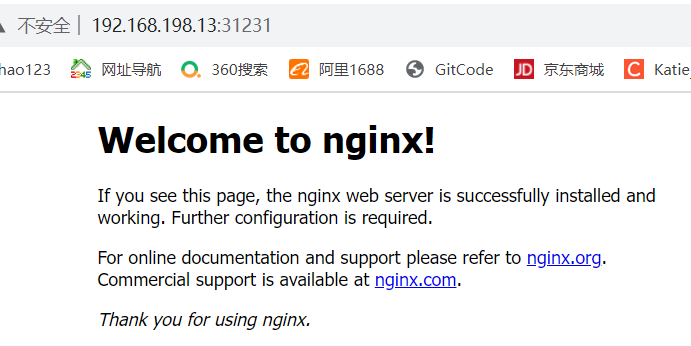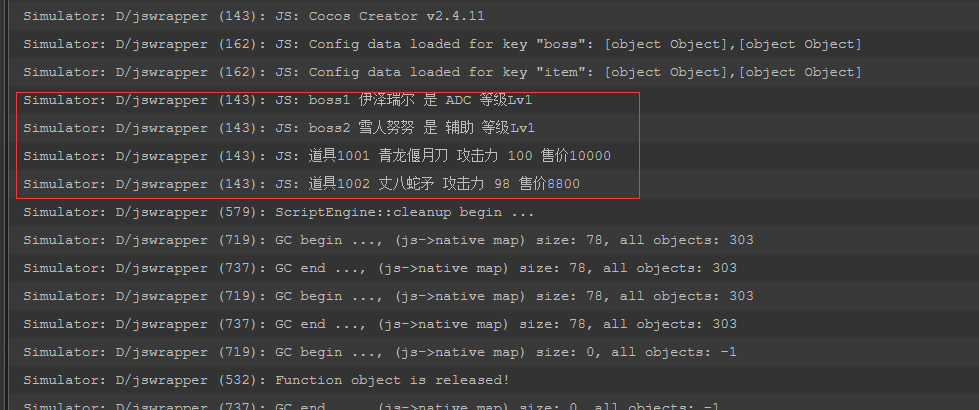文章目录
- jdk目录结构
- 函数式接口
- wait、notify、notifyAll
- 并发编程
- Thread
- sleep、yield、join
- daemon (守护线程)
- 锁
- [synchronized ](https://blog.csdn.net/EnjoyFight/article/details/127457876)
- 线程池
jdk目录结构
jdk1.8
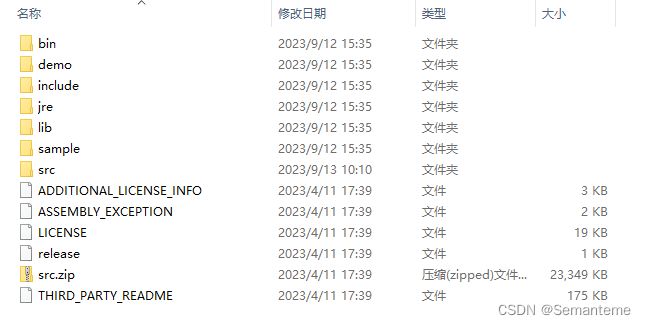
jdk20
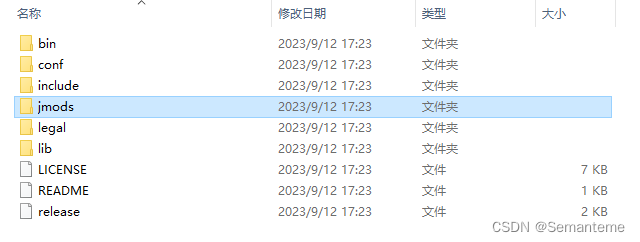
函数式接口
https://blog.csdn.net/Don_t_always_ail/article/details/132222951
wait、notify、notifyAll

package com.example.demo4.jdk;import java.util.UUID;public class WaitTest {public static void main(String[] args) {Print print = new Print();new Thread(() -> {for (int i = 0; i < 28; i++) {print.printNum();}}).start();new Thread(() -> {for (int i = 0; i < 26; i++) {print.printChar();}}).start();}}class Print{private int flag = 1;private int count = 1;public synchronized void printNum(){if(flag == 2 && count < 27){try {wait();} catch (InterruptedException e) {throw new RuntimeException(e);}}System.out.print(2*count-1);System.out.print(2*count);flag = 2;if(count < 27){notify();}}public synchronized void printChar(){if(flag == 1){try {wait();} catch (InterruptedException e) {throw new RuntimeException(e);}}System.out.println((char)(count - 1 + 'A'));flag = 1;count++;notify();
// notifyAll();}
}并发编程
- 可见性:synchronized
- 有序性
- 原子性
Thread
线程状态
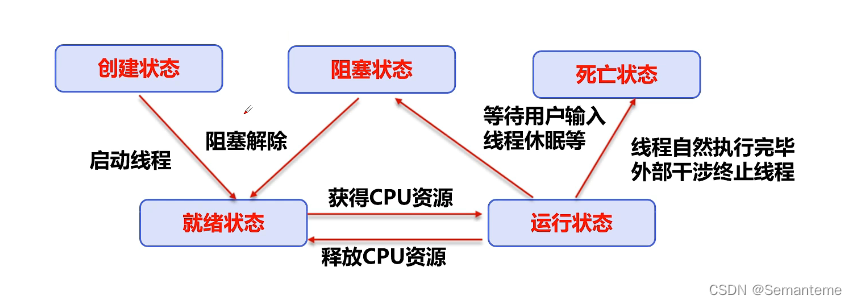
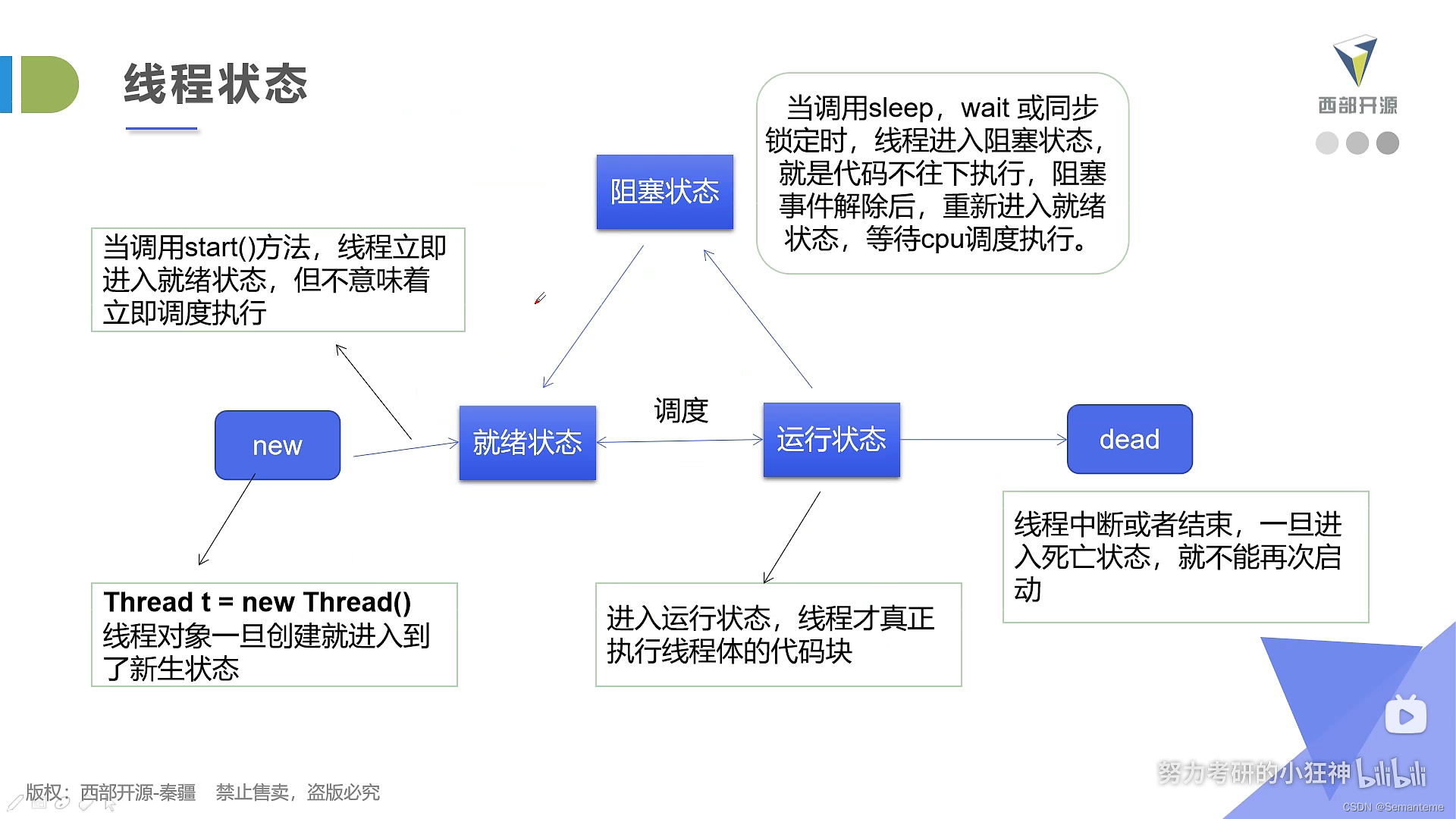
线程状态。 线程可以处于以下状态之一:
- NEW
尚未启动的线程处于此状态。 - RUNNABLE
在Java虚拟机中执行的线程处于此状态。 - BLOCKED
被阻塞等待监视器锁定的线程处于此状态。 - WAITING
正在等待另一个线程执行特定动作的线程处于此状态。 - TIMED_WAITING
正在等待另一个线程执行动作达到指定等待时间的线程处于此状态。 - TERMINATED
已退出的线程处于此状态。
sleep、yield、join
-
sleep(long millis) :使当前正在执行的线程停留(暂停执行)指定的毫秒数,这取决于系统定时器和调度程序的精度和准确性。
-
sleep(long millis, int nanos) :导致正在执行的线程以指定的毫秒数加上指定的纳秒数来暂停(临时停止执行),这取决于系统定时器和调度器的精度和准确性。
-
yield() :对调度程序的一个暗示,即当前线程愿意产生当前使用的处理器。
-
join() :等待这个线程死亡。
-
void join(long millis) :等待这个线程死亡 millis毫秒。
package com.example.demo4.thread;public class JoinTest implements Runnable {private String name;public JoinTest(String name){this.name = name;}@Overridepublic void run() {for (int i = 0; i < 10; i++) {System.out.println(name + i);}}public static void main(String[] args) {JoinTest joinTest = new JoinTest("vip线程:");Thread thread1 = new Thread(joinTest);thread1.start();for (int i = 0; i < 50; i++) {if(i == 40){try {thread1.join();} catch (InterruptedException e) {throw new RuntimeException(e);}}System.out.println("主线程:" + i);}}
}daemon (守护线程)
- 此线程标记为daemon线程或用户线程。 当运行的唯一线程都是守护进程线程时,Java虚拟机将退出。
- 线程启动前必须调用此方法。
锁
synchronized
线程池
package com.example.demo4.thread;import org.junit.jupiter.api.Test;import java.util.Date;
import java.util.HashMap;
import java.util.concurrent.*;public class ThreadPoolSizeTest {@Testpublic void test() throws InterruptedException {new HashMap<>();ThreadPoolExecutor executorService = new ThreadPoolExecutor(2, 3, 30, TimeUnit.SECONDS,new LinkedBlockingQueue<>(2), Executors.defaultThreadFactory(),new ThreadPoolExecutor.DiscardPolicy());//每隔两秒打印线程池的信息ScheduledExecutorService scheduledExecutorService = Executors.newScheduledThreadPool(1);scheduledExecutorService.scheduleAtFixedRate(() -> {System.out.println("=====================================thread-pool-info:" + new Date() + "=====================================");System.out.println("CorePoolSize:" + executorService.getCorePoolSize());System.out.println("PoolSize:" + executorService.getPoolSize());System.out.println("ActiveCount:" + executorService.getActiveCount());System.out.println("KeepAliveTime:" + executorService.getKeepAliveTime(TimeUnit.SECONDS));System.out.println("QueueSize:" + executorService.getQueue().size());}, 0, 2, TimeUnit.SECONDS);try {//同时提交5个任务,模拟达到最大线程数for (int i = 0; i < 5; i++) {executorService.execute(new Task());}} catch (Exception e) {e.printStackTrace();}//休眠10秒,打印日志,观察线程池状态Thread.sleep(10000);//每隔3秒提交一个任务while (true) {Thread.sleep(3000);executorService.submit(new Task());}}static class Task implements Runnable {@Overridepublic void run(){try {Thread.sleep(1000);} catch (InterruptedException e) {e.printStackTrace();}System.out.println(Thread.currentThread() + "-执行任务");}}
}结论:
- 线程池数达到最大时如果在规定时间内一直有任务进入,则线程池数量不会减少
为何【ArrayList】为线程不安全的?





